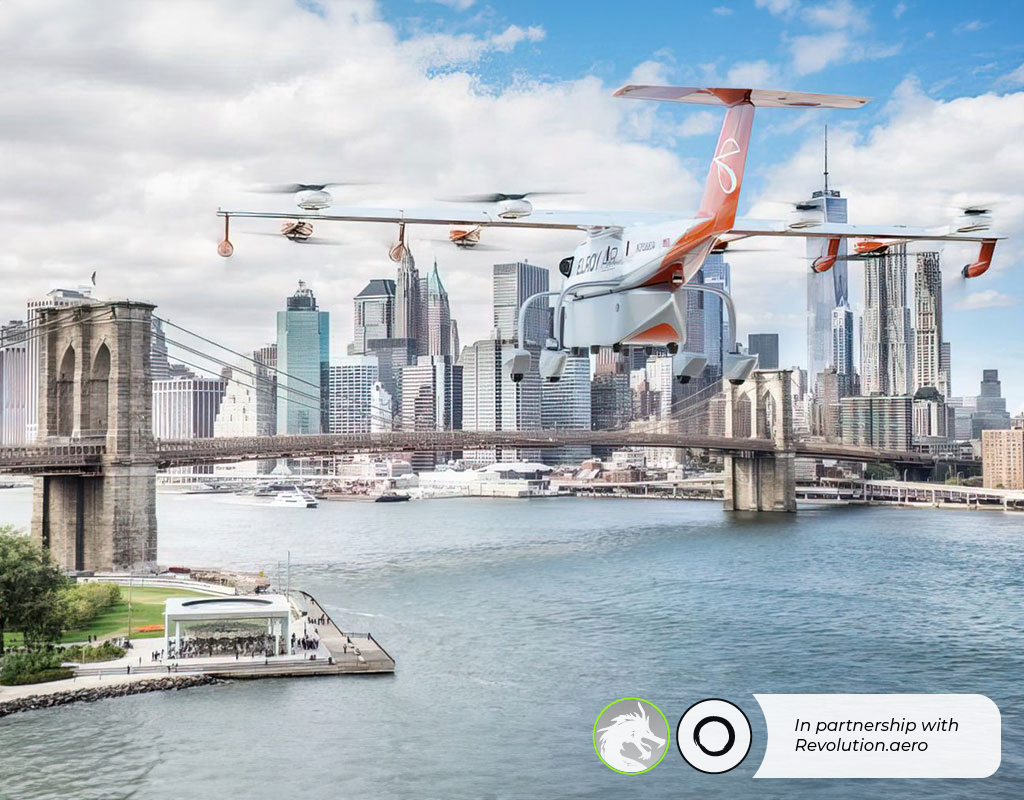
The Port Authority of New York and New Jersey has selected Elroy Air and Skyports Drone Services to look at the possibility of operating uncrewed cargo deliveries in the region.
The partnership comes months after the Port Authority tested the viability of transporting goods across the Hudson River via a small uncrewed aircraft by flying a box of Girl Scout cookies between Brooklyn and New Jersey. The journey took about 30 mins, in a car it can be up to two hours.
As a bistate agency the Port Authority is looking to establish fixed drone routes that could be used to send high-value cargo around the region. The delivery of the cookies in May 2023 brought the first evidence that drone devilry across multiple federal, state and local jurisdictions is possible.
“It may seem like something from the Jetsons, but if drone cargo proves viable it may be a low-carbon way to move the most valuable items between New York and New Jersey,” said Seth Wainer, the Port Authority’s programme director of innovation. “We are exploring routes and starting to look for customers who may be interested in investing in this space alongside us.”

The cookies that flew from Brooklyn to New Jersey being loaded onto the drone back in May, 2023.
Depending on demand, possible routes could include cross-Hudson travel or middle-mile cargo delivery between warehouses or fulfilment centres. In New Jersey, it might mean flying over congested roads between a Newark Liberty International Airport warehouse and a hospital waiting for temperature-controlled medication or equipment for a time-sensitive medical procedure. The cargo – and therefore size of aircraft used – would be limited to small high-value payloads.
Alex Brown, director of Skyports Drone Services said: “Our partnership with the Port Authority of New York and New Jersey is a pivotal step for maritime and logistics focused drone operations in the US. The Port Authority, with its extensive portfolio of maritime and aviation assets, including three of the busiest airports in the US and the nation’s second-largest port by total cargo volumes, is well positioned to integrate uncrewed aircraft applications in a highly complex operating environment.”
The partnership is a product of the Port Authority’s staff innovation hub, a voluntary group of employees with a shared interest in testing new technology or finding new uses for off-the-shelf products. Throughout the authority’s 103-year history, staff innovations have led to notable changes to commuting, such as a Space Act agreement with NASA to explore the next generation of flight in urban environments.
Saleh Kojak, drone programme manager for the Port Authority’s office of emergency management who coordinated the cargo drone pilot, said: “We already use drones for a wide range of purposes such as public safety or construction planning, but the sky is the limit for how else this – or any technology – can be applied for another use. Technology changes quickly, and the innovation hub encourages employees to think more strategically and more creatively about what’s available now or soon that can be used toward a better future for everyone.”

